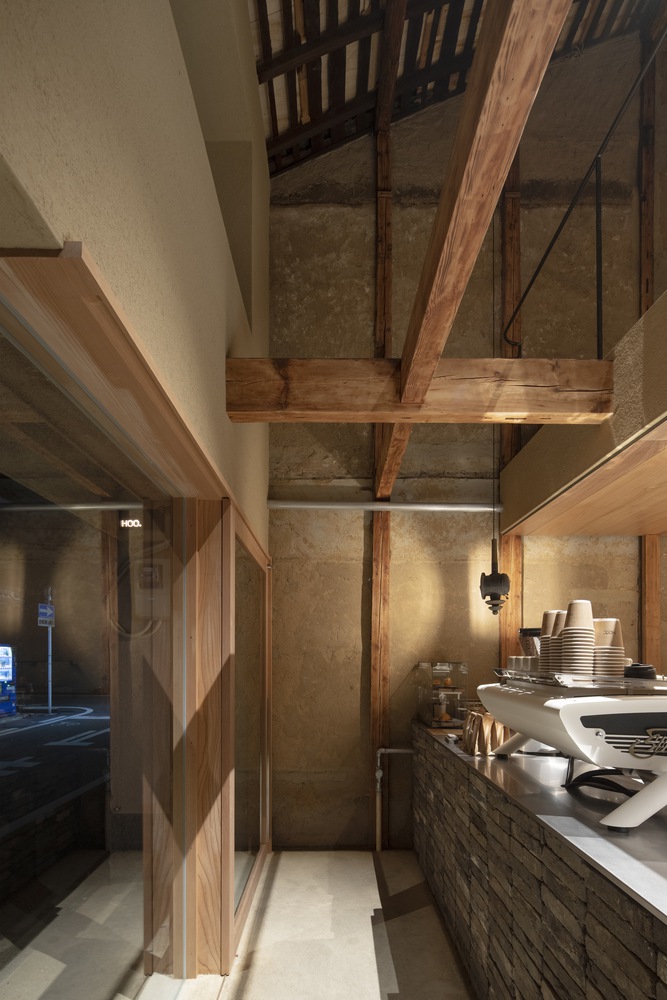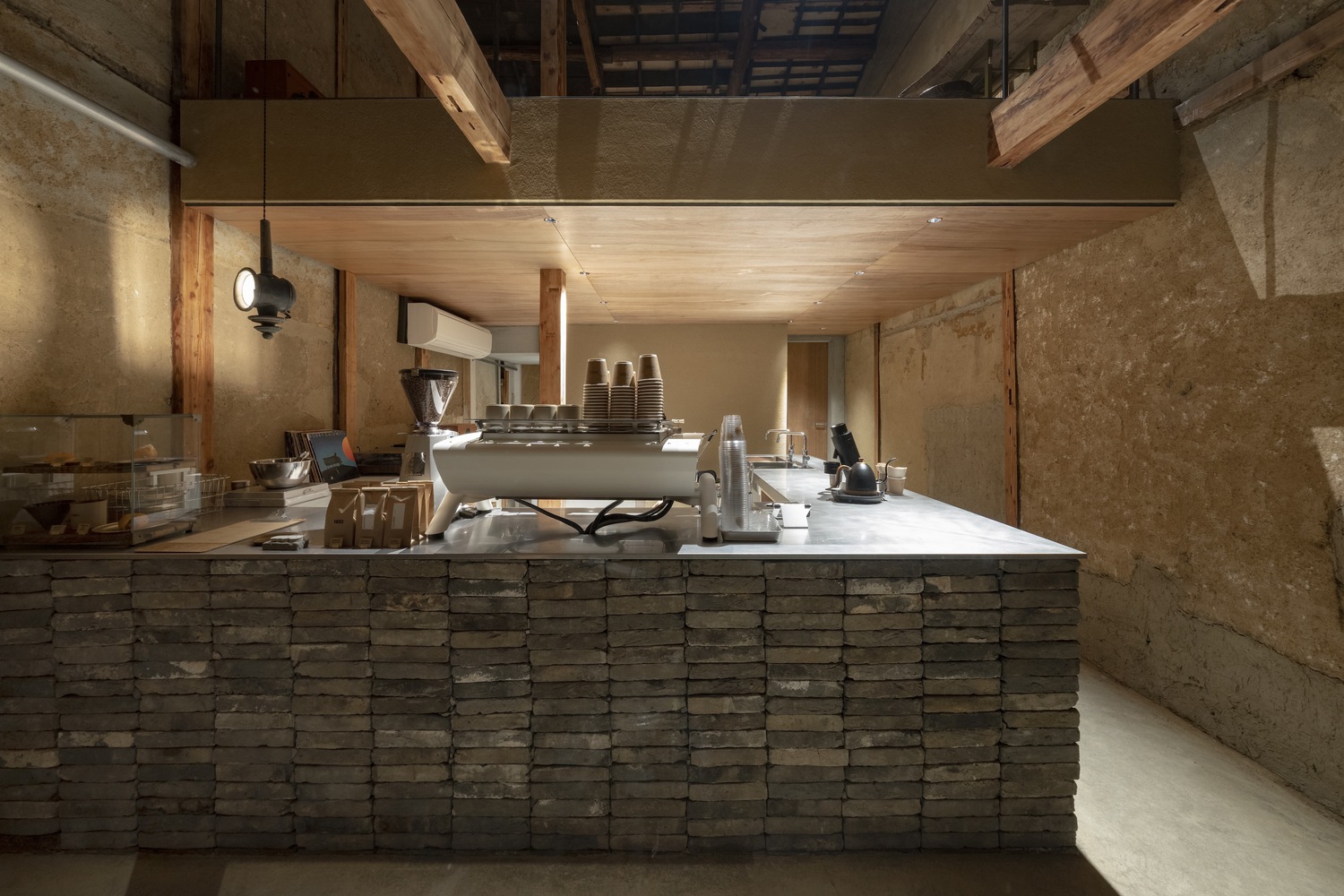The architects of Kyoto’s Hoo Cafe have made a feature of its warped wooden beams and ageing walls as part of its revitalisation as a coffee shop.
Koyori Architects oversaw the building’s transformation and adaptive reuse, deciding to repair and preserve existing features rather than starting anew. The result is a patchwork of old and new, akin to architectural sashiko (the art of visible repair) and wabi-sabi, celebrating the beauty of imperfection.
The design team used elements typically seen in Japanese machiya (traditional, wooden townhouses that functioned as both a residence and place of business), including earthen flooring and straw – which will develop a gradual patina to complement the weathered appearance of the rest of the interiors.

Photography: Junichi Usui

Photography: Junichi Usui

Photography: Junichi Usui

Photography: Junichi Usui

Photography: Junichi Usui
Continuing the rawness of the material palette, Koyori Architects brought in vintage bricks, which have been used to build the Kyoto cafe’s counter, and made furniture from slices of wood and tree trunks. A cache of steel chairs contrasts the natural elements, and textures are further emphasised at night, when passersby can look up to glimpse the original wooden ceiling beams, now much bowed, and the rough exterior of the stacked bricks.
Hoo’s menu is decidedly less traditional than the surroundings suggest, with coffee served alongside cream doughnuts and hot dog-filled buns.
467-3 Hashimotocho, Nakagyo Ward, Kyoto, 604-0072, Japan



























